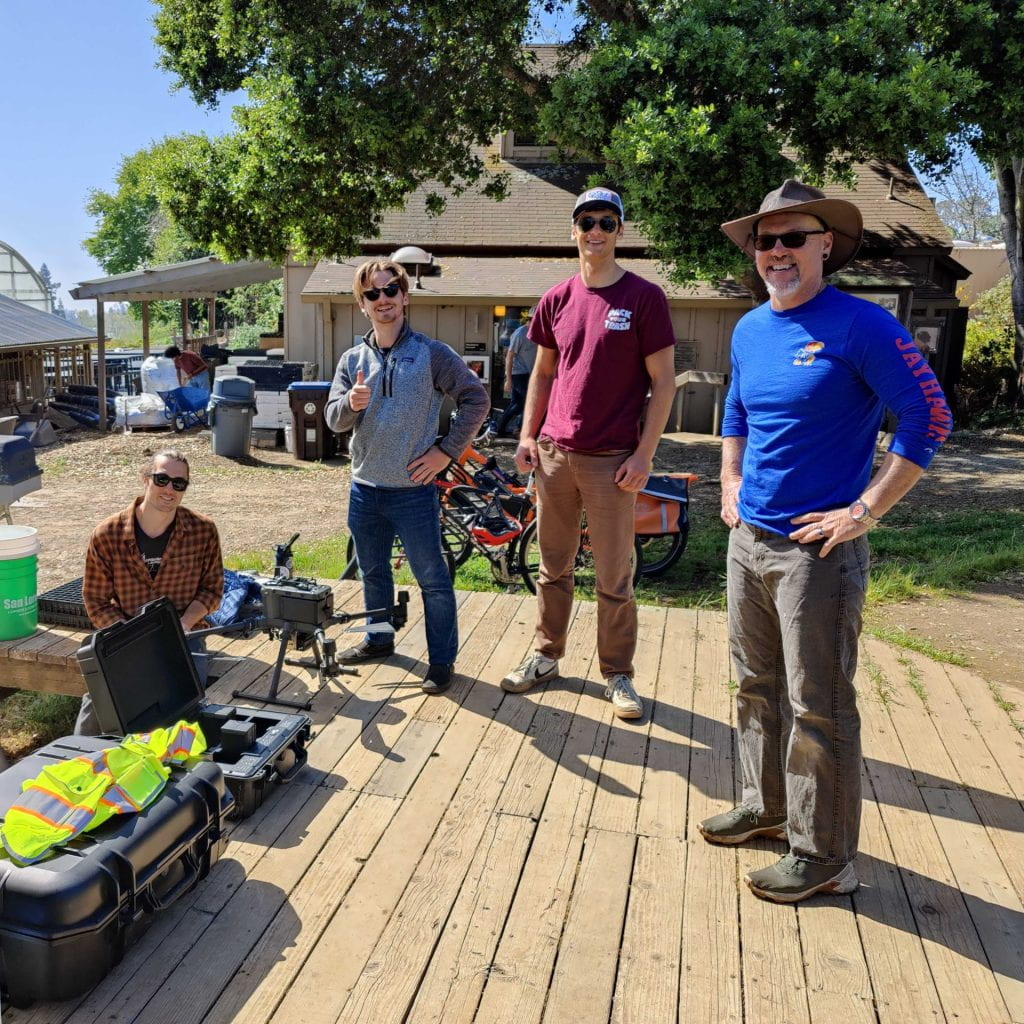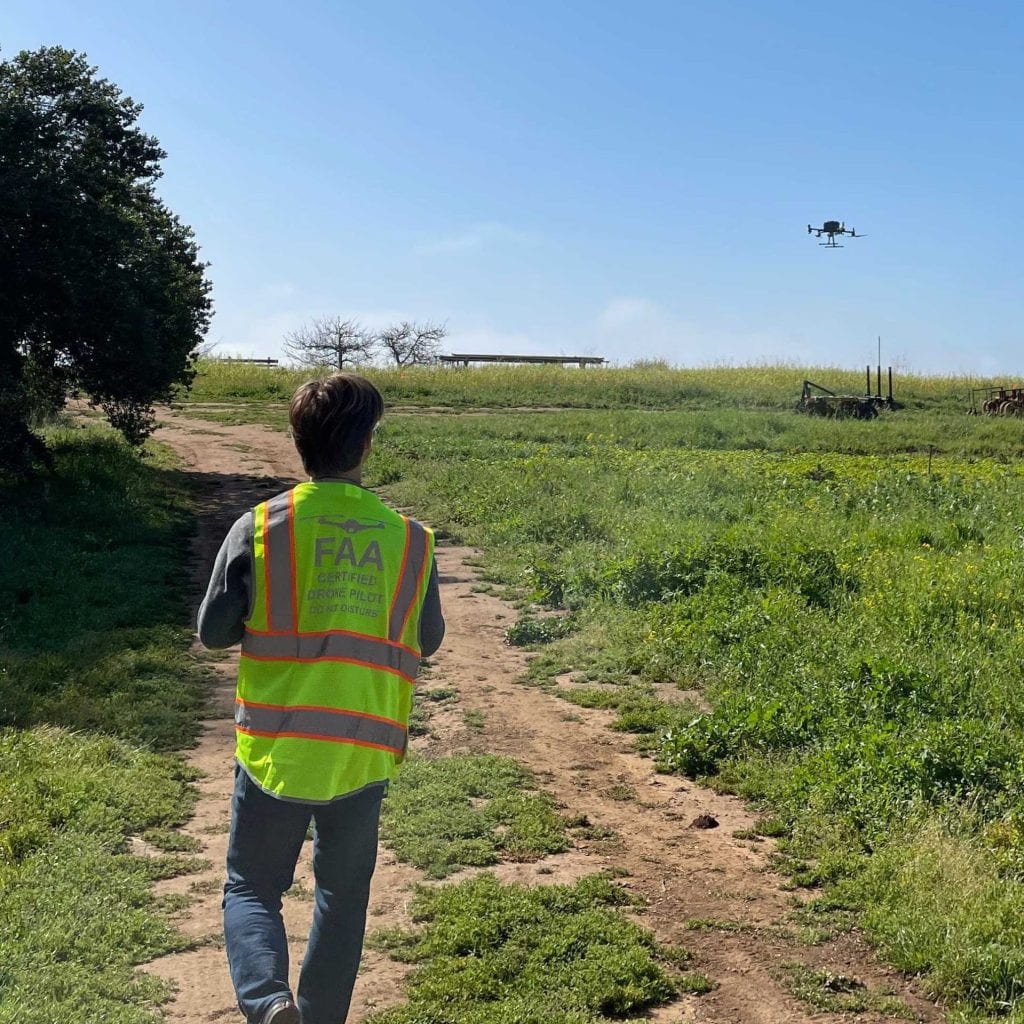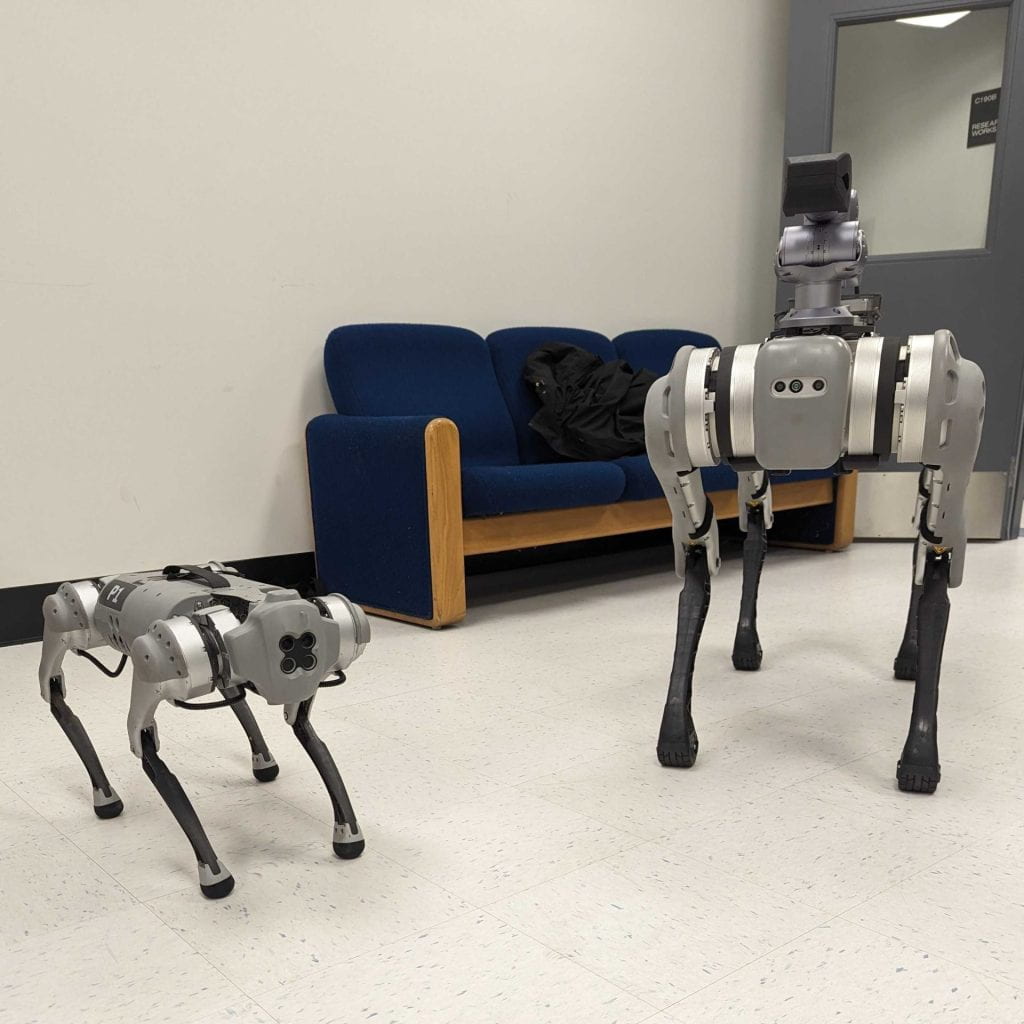
HARE Lab was founded by Dr. Steve McGuire at the University of California Santa Cruz in 2021. Comprised of a diverse mix of graduate and undergraduate students this lab’s overarching mission is separated into two distinct categories: the study of Human-Robot Interaction (HRI) and the development of prototype autonomous systems for use in support of manual applications such as labor-intensive work (notably agriculture) and in mitigating danger to emergency personnel in search and rescue operations.
Human-Robot Interaction (HRI)
As robotics continues to develop and integrate in everyday life understanding how humans interact with robots and autonomous (self-driving) systems is critical in the design of robots that can effectively perform tasks and collaborate with humans. Through the study of Human-Robot Interaction (HRI) researchers gain valuable insight on how to best create robotic systems that are intuitive, efficient, and most importantly safe to their users. A major hurdle often experienced in the study of robotics is, simply put, that robots are immensely complex systems with a suite of hardware and software components operating in constant tandem — this translates to a great challenge in creating human-to-robot interfaces that are easy to understand and use without sacrificing the efficiency or capabilities of the robot. Finding the balance between usability and capability is paramount to creating an effective robotic system that the most users can be satisfied with.
Perhaps most important in the field of human-oriented robotics is safety, both in the physical and mental sense. With various metallic moving parts that can create immense torque (such as with robotic arms) or propellers rotating at thousands of rotations per second (as with quadcopter drones), a myriad of precautions must be taken to minimize risk of injury to users and/or passerby. As such, the security felt by a user or bystander in the vicinity of an operating robot, especially if this robot is autonomous and operating without direct user input, is paramount. The study of HRI, therefore, places direct emphasis on development of systems that help to place human users and observers at ease through approaches such as the development of visible safeguards and redundant safety precautions, as well as systems that are anatomically familiar to humans such as robot arms or rovers. Overall, HRI’s importance as the field of robotics continues to evolve cannot be understated.
Autonomous System Development
Autonomous systems have vast potential to be leveraged in nearly any application to vastly improve productivity and promote human safety. One of our main focuses in this category has been in the agricultural sector, where our DJI Mavic 300 quadcopter drone (nicknamed “Astro”) was flown autonomously using a pre-determined flight path over a series of crop fields on the UCSC farm. Using a mixture of RGB and thermal camera imagery taken during flight, along with human operators taking direct measurements of crop health, an infrastructure was designed to monitor crop health and identify potential crop disease over multiple acres with a significantly smaller cost in resources and manpower than prior methods.
In addition to improving productivity, autonomous systems are capable of operation in areas and conditions that could otherwise endanger human operators. A focus of this lab is in evaluating search and rescue roles for our robots, notably our B1 Unitree robot dogs (nicknamed “Comedy” and “Tragedy”). Search and rescue operations in the place of public safety personnel in high risk areas such as post-earthquake areas where infrastructure collapse remains a concern are of particular interest, since (as much as we love our robots) a robot is far more replaceable than the life of a human.
HARE is staffed by driven graduate and undergraduate students with a deep interest in a broad range of subjects including control theory, machine learning and artificial intelligence, localization and state estimation, sensors and hardware design. Their biographies and backgrounds can be explored in “The Team” and “Alumni” for current and former researchers, respectively.






